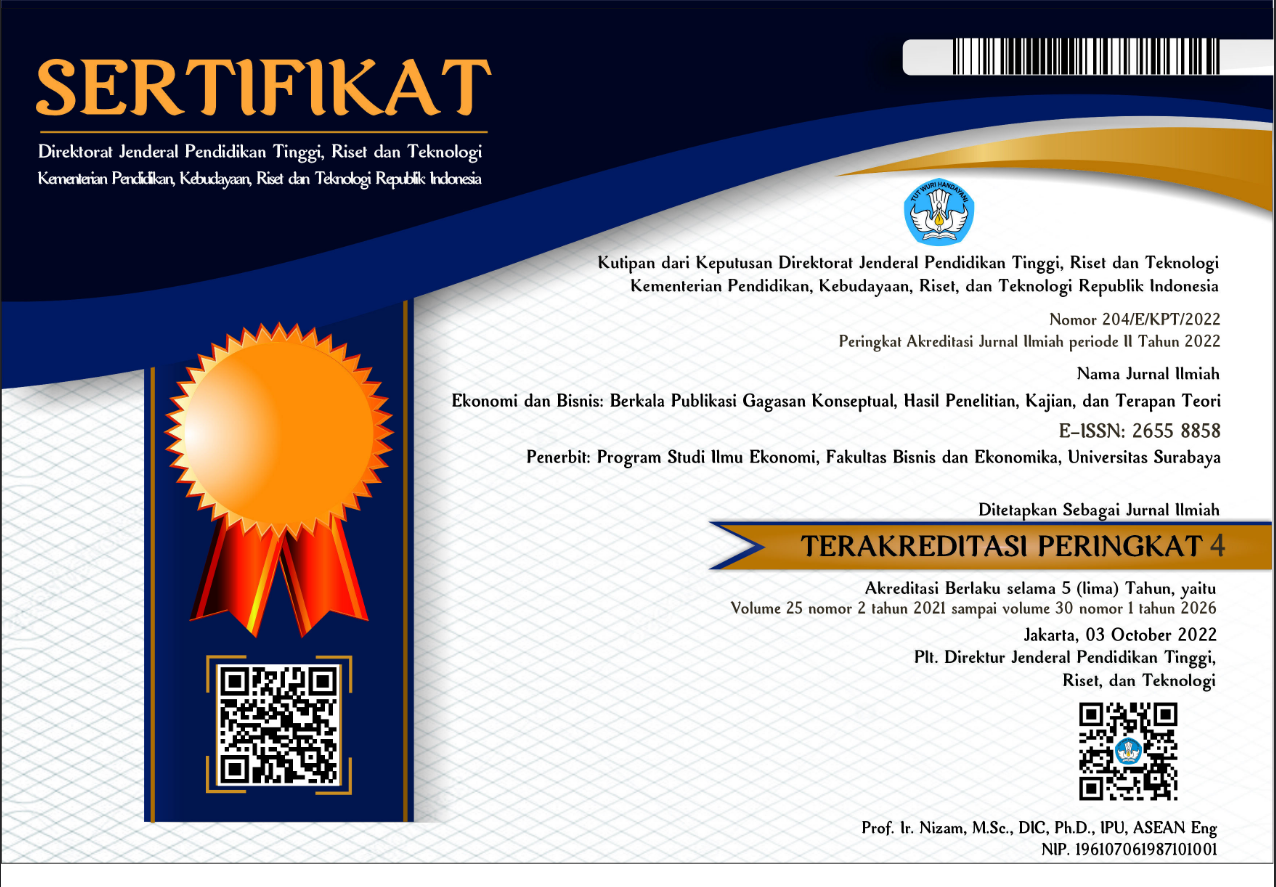ANALISIS PENERAPAN KEBIJAKAN KYOTO PROTOCOL
 Abstract Views:
351 times
Abstract Views:
351 times
 PDF Downloads:
199 times
PDF Downloads:
199 times
Abstract
Increasing competition of good output which interpreted with GDP in developed and developing countries that are members of the G20, have some impact on the degradation of environmental quality. The Production of good output namely GDP cannot be separated from bad output’s production which is CO2. The need for the Kyoto protocol as an environmental policy which has been ratified by the G20 that supposing to control emission levels which can be measured by the measurement of the environmental efficiency of the G20 countries. Apart from the environmental efficiency, efficiency is not the main criterion for making a country to be standard for another country. On the other hand, the performance quality of the environment must also be taken into account. The amount of the cost of environmental policy to maximize environmental efficiency of a country but the environmental performance of the country, state inefficiency in the cost of the policy then the country has not been used in a cost-efficient technology for improving the environmental quality. The approach which has used in this study is a quantitative approach, using Data Envelopment Analysis (DEA). To specify the input and output that is used in determining the environmental efficiency using Malmquist Index. The input and output is processed by looking at differences in productivity and incorporate technological change in its interpretation. It can be concluded that the value of the environmental efficiency of some countries are on the production frontier even if the Kyoto protocol is not implemented, but with the policy of the Kyoto protocol was able to further improve the efficiency of the environment. In some other countries for example Brazil rose from 70.09% to 83.49%, while the Germany states increased by 4.43% in their environmental policy. From some countries evident show that the policy of the Kyoto protocol succeeded in carrying out its role as controlling the growth of emissions in developed and developing countries, especially the G20 members.
Downloads
References
Banker, R. D., A. Charnes, and W. W. Cooper. 1984. “Some Models for EstimatingTechnical and Scale Inefficiencies in Data Envelopment Analysis,” ManagementScience 30:9 (September) 1078–92.
Cainelli, G et al. (2008). The Relationship Between Environmental Efficiency and Manufacturing Firms’s Growth. Climate Change Modelling and Policy Working Paper. University of Ferrara. Milan.
Caves, D., et al. 1982. The economic theory of index numbersand the measurement of input, output, and productivity. Econometrica, 50:73–86.
Chambers, R. G. R. Fare, S. Grosskopf. 1996. Productivity growth in APE countries, Pacific Economic Review 1 (3) ;181–190.
Chambers, R. G., Y. Chung, and R. Fare .1996. “Benefit and Distance Functions,”Journal of Economic Theory 70 (August 1996) 407–19.
Charnes, A., Cooper, W., and Rhodes, E. 1978. Measuring The Efficiency of Decision-Making Units. European Journal of Operational Research, 2:429–444.
Coelli, T., D. S. P. Rao, and G. Battese. 1998. An Introduction to Efficiency and ProductivityAnalysis. Boston: Kluwer Academic Publishers.
Corrado, C., Hulten,C., and Sichel, D. (2009). Intangible Capital and U.S. Economic Growth. Review of Income & Wealth, 55:661-685.
Debreu, G. 1951. “The Coefficient of Resource Utilization,” Econometrica19:3 (July) 273–92
Deprins, D., et al. (1984). Measuring Labor Efficiency in Post Offices,in: Marchand, M., Pestieau, P. and Tulkens, H. (eds.), The Performanceof Public Enterprises: Concepts and Measurement, Elsevier, Amsterdam, 243–267.
Fare, R, S.Grosskopf, and D.Tyteca. 1996. “An Activity Analysis Model of The Environmental Performance of Firms - Application to Fossil Fuel Fired Electric Utilities”. Ecological Economics 18, 161-175.
Fare, R. and Grosskopf, S. 2004. Modelling Undesirable Factors in Efficiency Valuation: A Comment. European Journal of Operational Research, 157:242–245.
Fare, R., S. Grosskopf, C. A. K. Lovell, and C. Pasurka. 1989. “Multilateral ProductivityComparisons When Some Outputs Are Undesirable: A Non-parametric Approach,” Review of Economics and Statistics 71:1 (February) 90-8.
Farrell, M. J. 1957. “The Measurement of Technical Efficiency,” Journal of the RoyalStatistical Society Series A, General, 120, Part 3, 253–81.

 DOI:
DOI:















